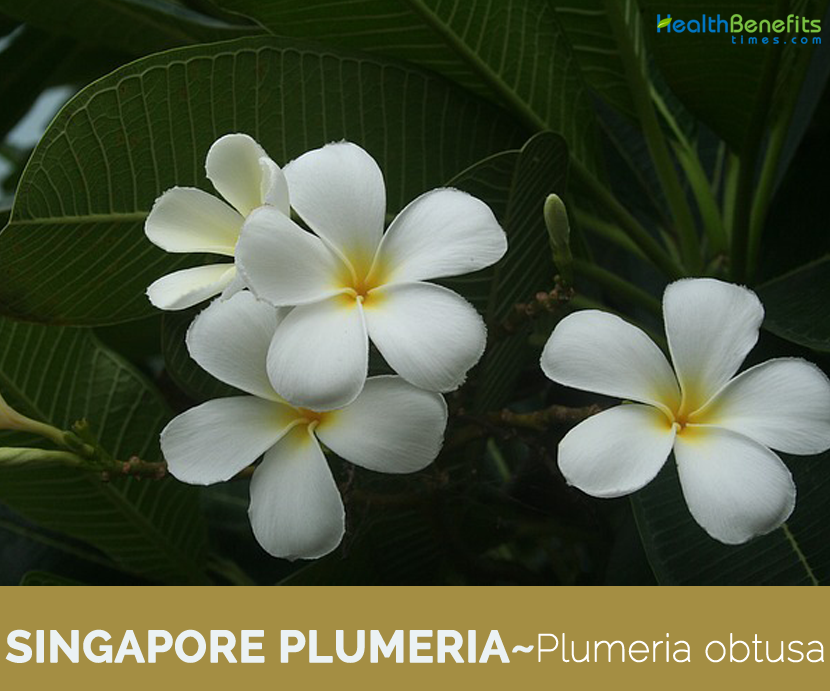| Singapore Plumeria Quick Facts | |
|---|---|
| Name: | Singapore Plumeria |
| Scientific Name: | Plumeria obtusa |
| Origin | Greater Antilles, northern Central America and southern– eastern Mexico to Belize, Florida Keys and the Caribbean |
| Shapes | Cylindrical seed pods about 3-5 inches long |
| Health benefits | Treat diabetes mellitus and uses as remedy against oedemas |
Plant Description
Singapore Plumeria is a large shrub or small tree that grows about 5-10m high. The plant is best grown in rich, dry to medium moisture, well-drained loams. Branchlets are pale green, thick and fleshy. Leaves are alternate, mostly clustered at branch tips, petiolate, obovate to oblong-obovate, to 25 cm long, dark green and shiny adaxially, tertiary venation strongly prominent abaxially and apex rounded. Flowers are large, fragrant, waxy and showy with large deciduous bracts. Calyx 5-lobed, lobes equal or sub equal. Corolla salver form or funnel shaped, white, 4 cm across, throat yellow, lobes 5, spreading, slightly recurved. Stamens inserted at or near base of corolla tube. Fruits are cylindrical seed pods about 3-5 inches long which are rarely formed in cultivation. Stem, branches and leaves consists of milky sap. Plumeria are valued as landscape plants and ornamentals and for their flowers.
Traditional uses and benefits of Singapore Plumeria
- Plumeria obtusa was used by Bapedi traditional healers to treat diabetes mellitus in South Africa.
- Plumeria obtusa and Momordica balsamina were exclusively used to treat diabetes mellitus, and only in the Sekhukhune District.
- In traditional medicine, a decoction of the bark is given in varying doses as a purgative or as a remedy against oedemas.
Other Facts
- Plumeria species including P. obtusa are suitable for landscape plantings.
- The flowers of all Plumeria species are utilized to make leis in Hawaii.
- The flowers are also used for making wreaths and garlands.
- This plant is commonly used as an ornamental, grown for its flowers.
- In Cambodia the flowers are used to make necklaces and in offerings to the deities.
References:
http://www.theplantlist.org/tpl1.1/record/kew-161613
https://www.itis.gov/servlet/SingleRpt/SingleRpt?search_topic=TSN&search_value=30199#null
https://davesgarden.com/guides/pf/go/55164/
https://npgsweb.ars-grin.gov/gringlobal/taxonomydetail.aspx?id=28883
http://www.missouribotanicalgarden.org/PlantFinder/PlantFinderDetails.aspx?kempercode=f412
https://plants.usda.gov/core/profile?symbol=PLOB2
https://en.wikipedia.org/wiki/Plumeria_obtusa
Comments
comments
